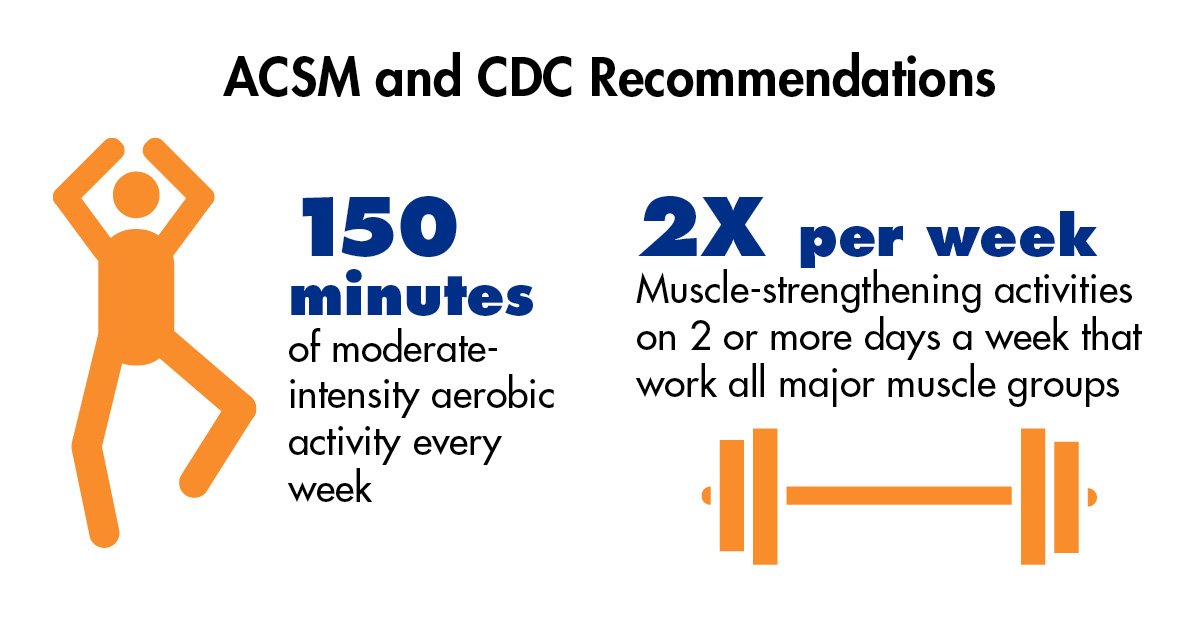When you’re a beginner starting to workout, the sheer amount of options and advice out there can be daunting. It can seem easier to just not get started than it is to review everything. This beginner’s fitness guide from the Mayo Clinic doesn’t even tell you to get started moving until the 4th thing. Prior to that they want you to measure and over analyze things. Thanks for nothing, Mayo.
Start Moving First, Then Refine It.
Instead, skip all the overanalyzing junk and get started moving more each day. Walk, jog, learn to do push ups, lift weights, or dance. Start with whatever you have access to or whatever you think you may enjoy and do it for as long as you’re comfortable. After you’ve gotten started, then you use that momentum to begin thinking more about refining your program. But don’t lose the momentum!
CLICK THE BUTTON BELOW FOR workouts and activities to get you started ↓↓↓
Physical Activity Recommendations
In their physical activity guidelines, the American College of Sports Medicine and Center’s for Disease Control recommend you get a minimum of 150 minutes of moderate physical activity each week or 75 minutes of vigorous physical activity and perform resistance training for your major muscle groups twice per week.
That can sound like a challenge when you’re not used to taking on additional exertions voluntarily. Don’t worry though, because you don’t have to begin with all of that and you don’t have to try to go all out either. In fact I find many people push themselves way too hard when they’re just getting started.
Don’t Start Harder Than Necessary
The ACSM defines moderate physical activity as being a 3-4 out of 10 in terms of RPE. That stands for Rating of Perceived Exertion and means how challenging you think a given exercise is. At a level of 3-4 you should feel like you can easily keep a conversation going while you’re walking, joggling, or whatever it is you’ve chosen to do. Lot’s of people push until they’re out of breath and have to quickly stop. That’s not necessary. Especially when you’re a beginner.
All Exercise Adds Up
You can build your way up to a total of 150 minutes each week little by little. You also don’t need to perform all of the exercise in large chunks of time. Less than 22 minutes each day will get you to meeting the total of 150 minutes per week and even that can be broken up into even smaller bits.
According to a review of current research on the effectiveness of short bouts of exercise, “physical activity of any bout duration is associated with improved health outcomes, which includes all-cause mortality.” So take that little walk around the building to break up your work day. Park at the back of the parking lot. Take the stairs. Even some vigorous house cleaning and things you already do can contribute. It all counts!
Include Strength Training To Get Stronger
If the resistance training sounds more your speed for getting started, that’s great too. Research backs a myriad of benefits from strength training that go way beyond getting stronger and building muscle. Strength training has been shown to
improve your mood and ability to focus
increase your flexibility and mobility
maintain and increase bone density
improve your cardiovascular health
and even reduce your chances of injury or death
Train Major Muscle Groups With Compound Exercises
There are lots of ways to “work all major muscle groups” as suggested by the ACSM. Whether you are using free weights, machines, bands, or bodyweight resistance training you can focus your efforts on 4 main types of compound movements to effectively train your entire body. Compound movements are generally exercises that require you to work multiple muscle groups across multiple joints. This means you are able to work all those muscle groups faster with fewer total exercises. The main types of compound movements you should focus on to start should be:
lower body
This includes variations of lunges, squats, deadlifts, leg press, and more.
upper body pushing
These compound movements include push ups, overhead press, bench press, landmine press and chest pressing variations.
upper body pulling
Lat pulldowns, rows, chin ups, pull ups, and anything where you use your arms to pull things closer to yourself are good compound exercises.
core movement and stability
Your first thought might be variations of planks, crunches and twists, but you can also include great exercises like crawling, and farmers walks too.
You can make it more complicated than that by categorizing exercises into more classes of movements, but this will likely just create inaction through over analysis. This will cover all your bases and keeps it simple.
Mix and Match Compound Exercises For Quick Workouts
You can start by doing a few sets for one of each those types of compound movements two times per week. That would likely take less than 30 minutes to get done even with rest breaks.
An example of that would be 2-4 sets of 8-12 repetitions of lunges, push ups, dumbbell rows, and shoulder tap planks. You could do that twice per week to meet the ACSM guidelines for strength training.
If you wanted to keep your daily workouts even quicker you could pick two compound movements for a workout and do the other two another day. These workouts could be very brief and spread out over four workouts instead of two each week. However, you make time for it in your schedule, it all works.
An example of workouts like this could be 2-4 sets of 8-12 repetitions of goblet squats and inverted rows one day followed the next day by 2-4 sets of 8-12 repetitions of push ups and Russian twists. These workouts would be super quick and efficient.
Include Activities That Aren’t Just Exercise
While most of the activities discussed so far are workouts and exercises, you can gain many of the same benefits from physical activity that isn’t necessarily just for the sake of exercise. Things you do for recreation and enjoyment can play a huge part in your overall fitness.
Great activities to stay fit would include dancing, hiking, surfing, skating, basketball, volleyball, rock climbing, and more. These things will keep your heart rate elevated, moving and feeling fit.
In the ebook, Push Ups and Tacos, it’s outlined how you can incorporate these types of activities along with quick workouts and non-restrictive eating strategies to enjoy a sustainable lifestyle that keeps you strong and fit. Click the link below to get your copy.
If you’re looking for additional support in developing consistent exercise habits you can also join the Push Ups & Tacos 12-Week program, with workouts, coaching, and accountability delivered through the Strong Made Simple app.
No matter how you choose to get moving, get started and refine it as you go. You got this :-)
Start working out with this free fitness guide.
Click the button below to receive your copy of Push Ups & Tacos.




